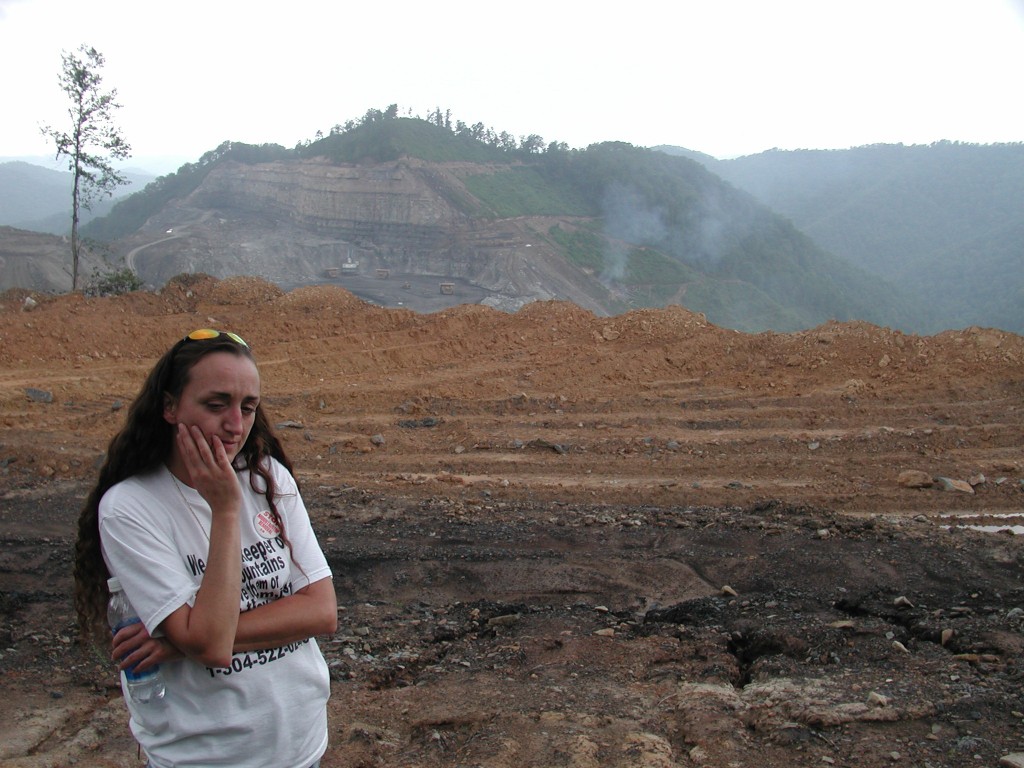The Last Mountain, Bill Haney’s piercing new documentary about coal mining in the Appalachians, features enough explosions to make Michael Bay blush. In shot after shot, violent plumes of rubble erupt skyward from the side of denuded mountains, leaving malevolent clouds of dark ash lingering behind to coat the inside of West Virginians’ lungs. The explosive montages are brutal and volcanic, and communicate better than any Environmental Impact Statement the atrocities that coal mining companies inflict upon the land.
Those atrocities are myriad, and appalling. The Last Mountain chronicles the health impacts of coal mining in excruciating detail: six people downriver of a mountaintop removal site die of brain tumors within a few years. A school’s walls are coated in a fine veneer of silica dust. Entire communities drown in waves of toxic sludge that burst free from containment ponds. Mines collapse, miners entombed within. The economic impacts are severe, too: coal companies like Massey Energy trample unions, fire workers, and repress wages, even as their executives take home millions.

The Last Mountain’s primary focus, however, is trained on mountaintop removal: the common practice of stripping the trees from a peak and then blowing the top off it. The resultant landscapes are mutilated and hostile (every third word in this movie seems to be “moonscape”), and make for some viscerally disturbing viewing. Haney’s biggest expense must have been helicopter rentals: the movie is packed with sweeping aerial panoramas of stricken mountaintops, their gravelly flanks crawling with rapacious machinery.
When Haney isn’t soaring around in a chopper, he’s on the ground interviewing West Virginians. These first-person accounts make up the movie’s spine, and its conscience. We hear from Mary Gunnoe, a resident of the Coal River Valley, whose house is nearly washed away by the flooding caused by mountaintop removal; Bo Webb, who lives directly below the cliff from which Massey dumps its debris; and Ed Wiley, a coal worker-turned-activist outraged that his granddaughter’s school lies in the shadow of a containment pond. These interviewees, and many others, provide riveting testimony of coal’s terrible impacts.
The movie strays from its course when it spotlights the outsiders who have descended on West Virginia to fight King Coal. Haney grants a bizarre amount of screen time to Robert F. Kennedy, Jr., to the extent that he becomes the film’s de facto protagonist. Kennedy is a passionate and accomplished defender of the environment – he deserves humanity’s gratitude for founding The Waterkeeper Alliance – but he feels like an interloper when juxtaposed against people whose very lives are imperiled by mountaintop removal. Too often, the movie’s obsession with Kennedy’s activism drowns out the voices of native West Virginians, and when a group of miners tells him to go home, it’s hard not to sympathize with them.
Nonetheless, when The Last Mountain stays true to its Appalachian roots, it works as a devastating critique of coal mining’s evils. Not content with merely making the case against coal, Haney ends the film by exploring a proposal to install wind farms atop Appalachian peaks, and thereby end Massey Energy’s stranglehold on the region. The paean to wind feels slightly undercooked – some dubious statistics get thrown around, and the perfunctory, beatific shots of windmills are more than a little hokey. Still, it’s enough to provide hope that coal’s violence is less a permanent blight upon the land than a temporary, fixable mistake. Fittingly, The Last Mountain’s final moment is one last explosion: a collapsing coal-fired power plant, demolished to make way for renewable energy.
Ben Goldfarb is a Master’s student at the Yale School of Forestry and Environmental Studies and managing editor of Sage Magazine.